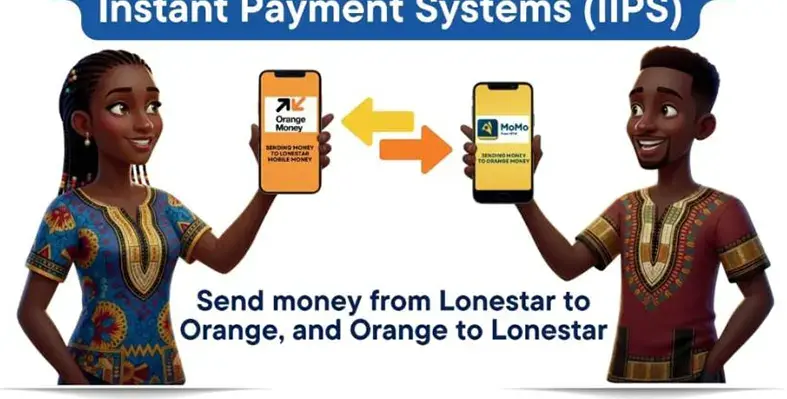Africa presents unique and exciting market challenges for telecommunications service providers and mobile network operators (MNOs)
A complex interplay of conditions, including the sheer scale of a large land mass with its often difficult and impenetrable terrain and highly distributed population densities, makes the cost-effective creation of a telephony infrastructure capable of supporting a modern economy difficult.
Outside of the well-developed economies of South Africa, Nigeria and Zimbabwe, which offer the most clearly defined mass markets in the sub-Saharan region, wireless has burgeoned across the continent and the subsequent build out of next-generation broadband mobile services has helped to significantly boost Africa’s digital economy. Mobile technology now accounts for a huge six per cent of GDP and is on the rise. Indeed, industry analysts predict that the continued migration to mobile broadband and the growth of new services will see this figure increase to 8.2 per cent of GDP by 2021.
Today mobile is playing a central role in improving access to health, finance, education and public services. Newly connected populations have gained access to the internet and a growing range of financial services for the first time and in some areas the new mobile infrastructure has enabled solutions that are improving access to reliable energy and clean water.
But when it comes to enterprise networking, today’s providers face a new and evolving challenge –scaling infrastructures and implementing new services in hard to reach locations while maintaining required performance and availability levels.
Africa – a ‘mobile first’ continent
According to the GSMA, in the last five years, the sub-Saharan Africa (SSA) region has become the fastest growing area in terms of both unique subscribers and connections; in mid-2015 there were 367 million subscribers and rising. What’s more, the region is experiencing rapid technology migration to high-speed networks, thanks to the growing availability of lower-cost smartphone devices and on going network developments by operators.
All this digital transformation is playing a central role in addressing a range of socio-economic developmental challenges across the region. Greater digital inclusion is improving access to vital services such as education and healthcare while driving economic and infrastructure development, and increased productivity and employment across the economy. According to estimates, the communications technology industry alone is set to employ 3.5mn by 2020, while wireless networks are stimulating a thriving mobile economic ecosystem on the continent.
Nairobi in Kenya, for example, has become the inspirational poster-child for other African countries thanks to innovations such as the M-Pesa mobile money services, Ushahidi crowdsourcing app and iHub community space for technology entrepreneurs. Indeed, research suggests there are now around two hundred IT hubs, 3,500 new tech ventures and a projected US$1bn in venture capital for start-ups across the SSA. Meanwhile, in the six major markets of Nigeria, South Africa, Tanzania, Ethiopia and the Democratic Republic of Congo, incubators and accelerators have sprung up alongside a flourishing app economy reinforcing local trends in business and modernisation.
This dynamic digital economy has seen tech giants like IBM, Microsoft and Google expand their operations in the region and partner with innovation centres. Meanwhile, Facebook’s recent announcement that it will beam Internet connectivity directly to remote parts of Africa via satellite is set to provide limited services for free to the poorest and most offline parts of the continent.
With the world’s fastest growing population forecast to consist of 540mn smartphone owners by 2020, according to the GSMA, emerging enterprise networking opportunities are already making it possible for businesses across the region to reach new customers and monetise new products and services.
This growth in the mobile enterprise is being generated through value-added services within the ecosystem, including the increasingly transformative nature of the Internet of Things (IoT). We’re already witnessing the emergence of innovative new machine-to-machine (M2M) services that include mission-critical healthcare applications such as dialysis and cardiac monitoring, blue light applications, smart metering, security surveillance and banking with placement ATM machines.
LTE: enabling the fast rollout of next-generation networks
The rollout of 3G and 4G networks has played a major role in changing the region’s network landscape. According to the GSMA, as of June 2015, commercial 3G networks had been launched in 41 countries across the SSA region, while 4G networks had been launched in 23 countries. The recent launch of 4G in Kenya and the government-backed single wholesale network (SWN) plans in Rwanda, is helping to drive further significant regional expansion as migration to higher speed mobile broadband networks continues apace.
However, the implementation of digital transformation in Africa requires specific and localised execution. 3G/4G LTE network technologies are proving vital to help drive growth throughout the wireless ecosystem. Africa’s low rate of fixed-broadband penetration has, until now, presented a key problem for businesses looking to create primary connections where wires aren’t available or installation would be too expensive or solutions would take too long to deploy. But these cost effective solutions can be deployed in hours, compared to the weeks and months it would take to install fibre – delivering a ‘day one Internet’ solution that addresses the fast evolving network landscape and helps businesses to reach every part of the continent.
Indeed, LTE network architectures are proving to be the ideal solution for eliminating these barriers to deployment, enabling enterprise networking and connectivity in almost any location. Providing not only the agility, cost, performance and security African enterprises need, LTE also enables greater network capacity and efficiencies along with the higher network speeds that translate into a better user experience – especially in rural and underserved areas.
Today’s distributed enterprises, emerging industries and government agencies need to be able to get Internet and network connectivity to new locations such as retail stores, banks, fast-food restaurants or any customer or citizen-facing environment fast. And the practical applications of LTE network architectures offer a low-cost way to achieve data connectivity and reach in locations that were previously unreachable or uneconomic to support.
As governments within the region adopt LTE radio frequency spectrum policies, operators are readying themselves to build out the next-generation networks capable of catering for the burgeoning data demand; by 2020 the number M2M connections is forecast to reach 30mn.
As a consequence, a growing number of organisations in the region are now deploying 3G/4G LTE networks for permanent primary connectivity, finding they can optimise and pool data among multiple distributed locations thanks to the highly agile architecture offered by the technology.
From ‘pop up’ networking for industries like retail, to enabling seamless load balancing between multiple WAN sources, LTE offers African enterprises the networking flexibility they need to serve a variety of customer and use cases. That includes enabling new M2M services whose success depends on easy low-cost installation and reliable day-to-day operations. Designed specifically to meet the space constraints and connectivity challenges many businesses in the region face, LTE networking technology is fast becoming the ‘go to’ solution in the M2M space.
The future of the SSA networking landscape looks bright, as businesses and government organisations continue to connect with the region’s demographic with innovative uses of mobile technology.
Attributed to Hubert Da Costa, Vice President EMEA, Cradlepoint























